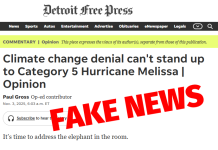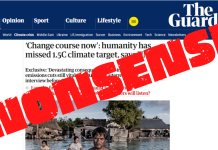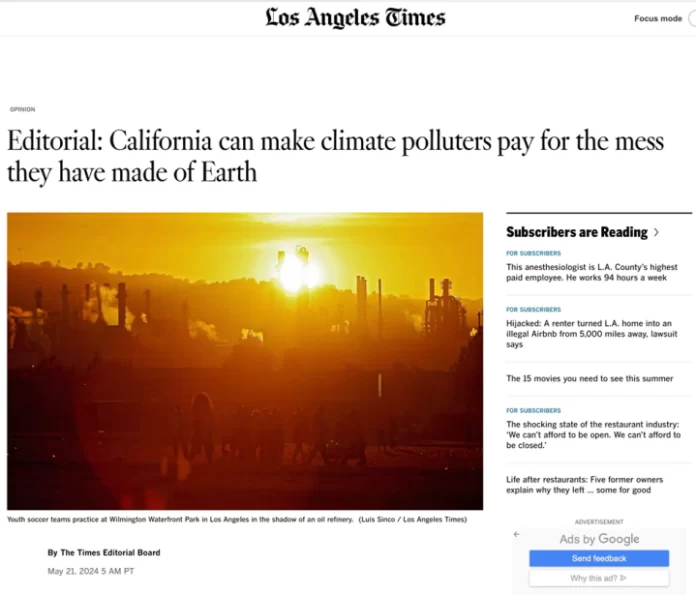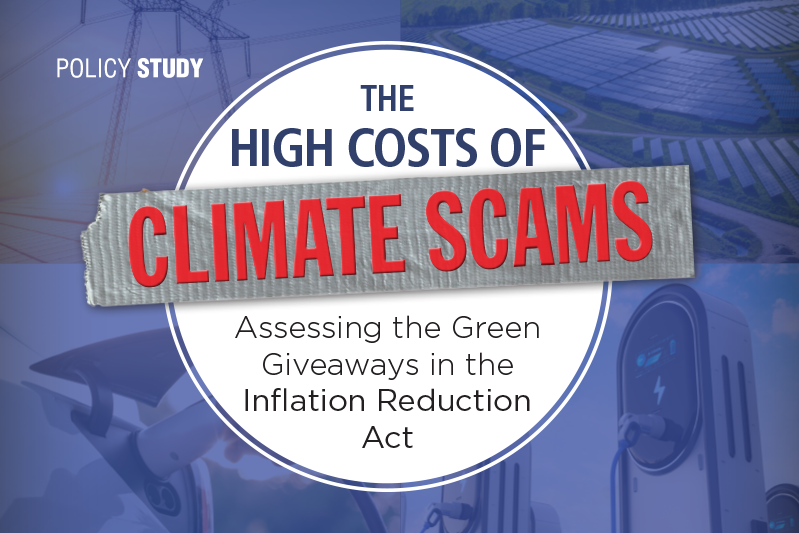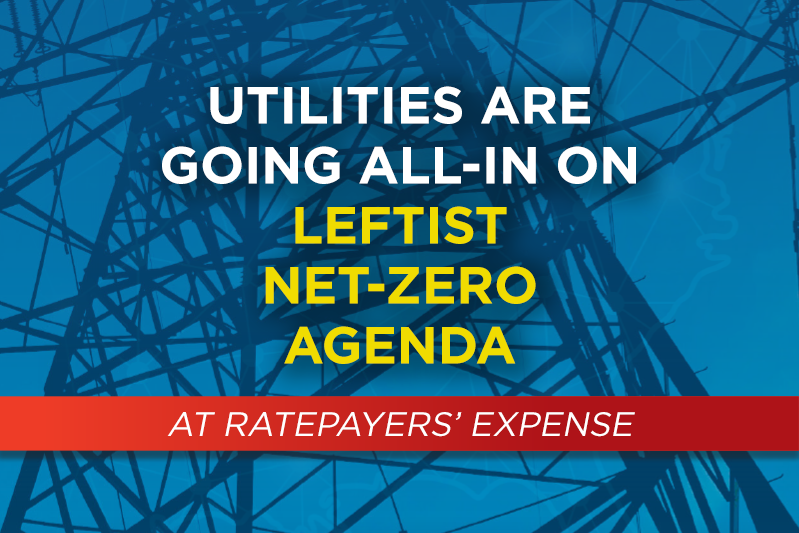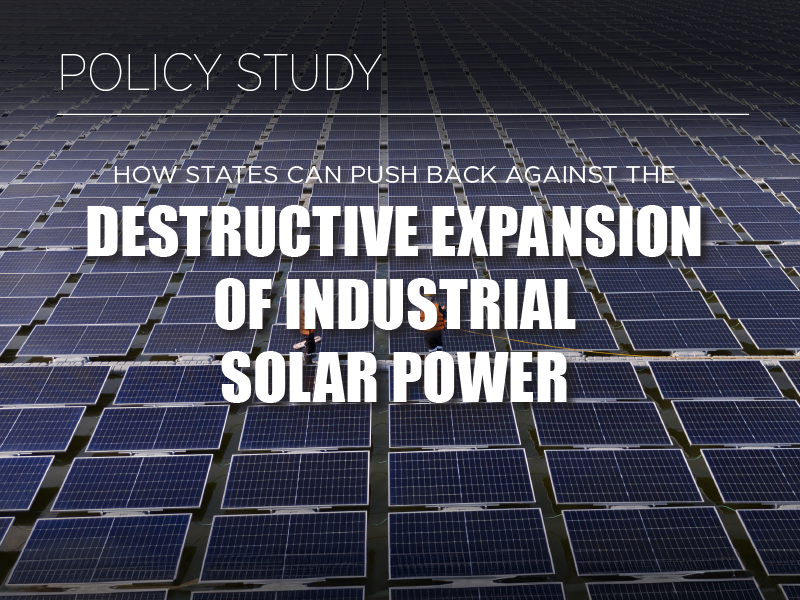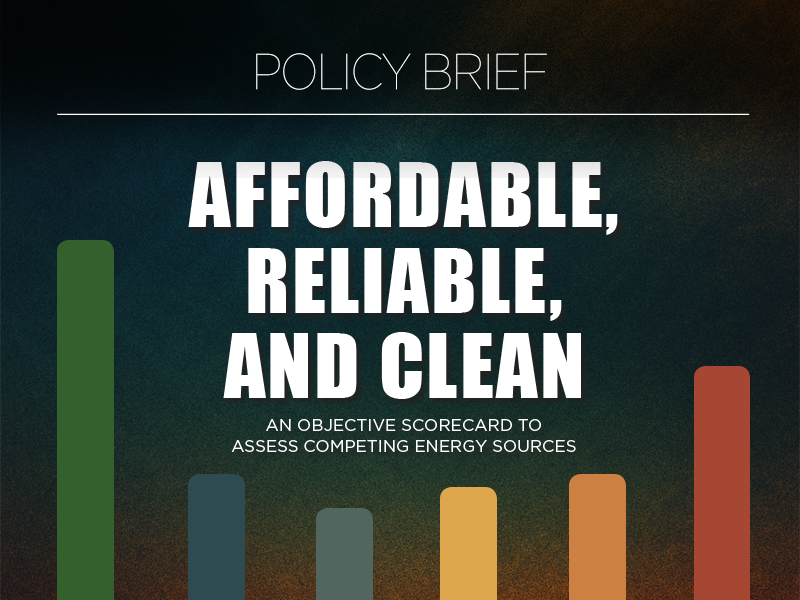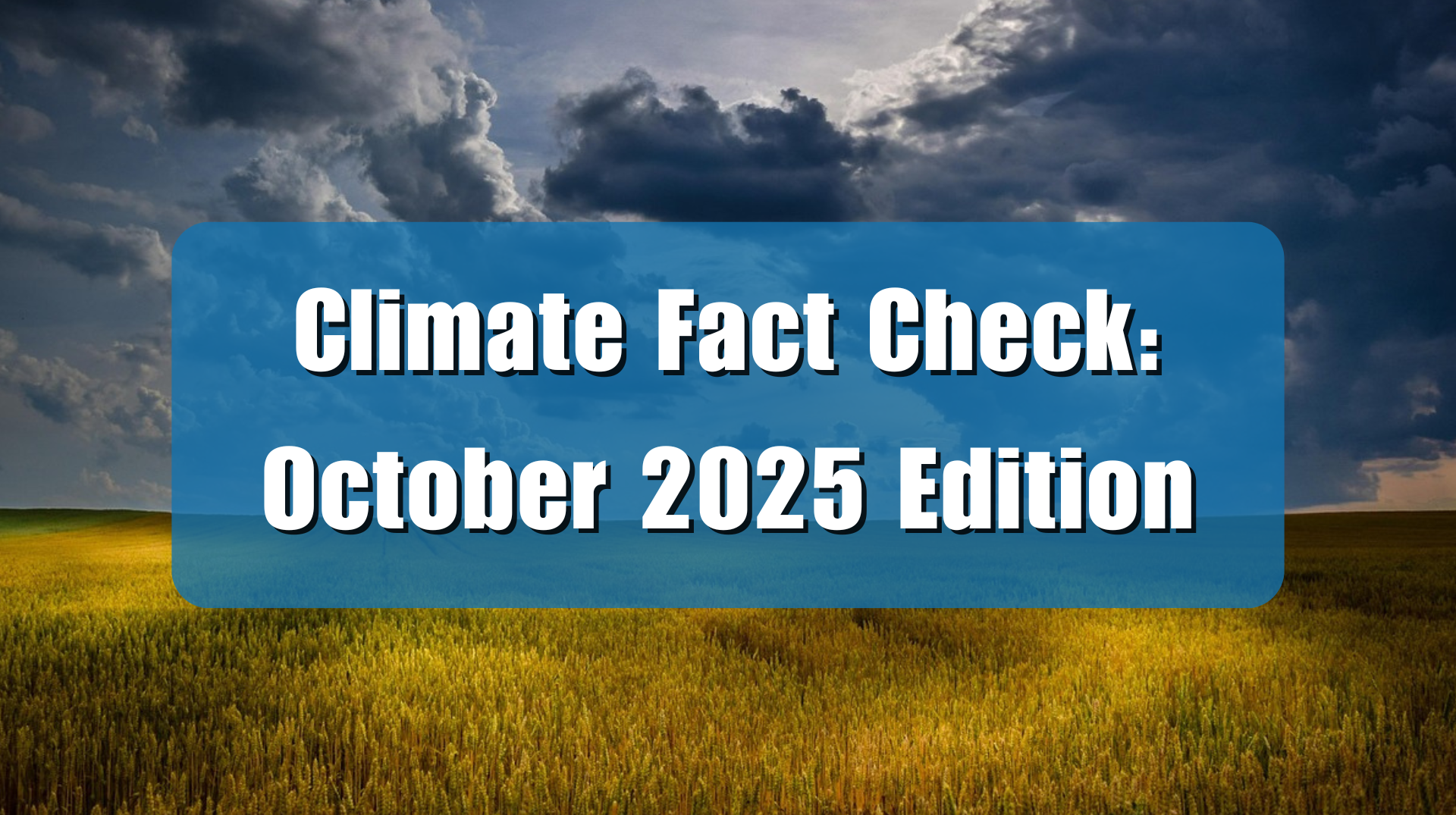A ridiculous L A Times editorial hypes imposing massive “Climate Recovery Act” cost penalties on fossil fuel suppliers that account for 70% of the energy that the state consumes to achieve its annual GDP.
The U.S. Energy Information Administration California total energy consumption versus GDP data shows (Table C10) that the state has the highest GDP of all 50 U.S. states and leads the nations next highest state GDP by 55% while having the 4th lowest energy consumption to GDP ratio of all 50 states.
Apparently, the Times believes that imposing massive costs penalties on fossil fuel energy suppliers will have no effect on these suppliers’ costs of business to the state with California importing 90% of its natural gas, 76% of its petroleum and 30% of its total electricity use (each shown respectively in diagrams below) from energy suppliers outside the state.
The economic reality is that these out of state energy suppliers that are critical to the state’s energy supply and economy will pass on these higher politically contrived “Climate Recovery Costs” to their customers including California with damaging GDP reductions and higher energy cost outcomes (on top of California’s already very high energy costs) for the state’s population.


Additionally, natural gas consumed by California provides 45% of the state’s generated electricity resulting in the outcome that fossil fuels and electricity imports account for 68% of the state’s total electricity (both in-state & imports) consumption.
EIA data (Table CT2) for California also shows that the state meets 70% of its total energy needs using fossil fuels. When biomass energy emissions are included, the state uses emissions producing fuels to meet 76% of its total energy requirements.
EIA data shows that solar and wind account for only about 8.6% of the states total energy despite tens of billions of dollars in subsidies mandated for use of these unreliable, non-dispatchable “renewable resources” that impose huge generation backup and transmission costs on the electric system that have resulted in California electricity energy prices (already among the highest in the U.S.) dramatically rising at the highest rates in the U.S.
The Times editorial fails to address any of these hugely significant energy use, supply and cost realities. Nor does the Times editorial address the major damage that will occur to the states GDP resulting from these ridiculous “Climate Recovery Act” penalties.
The Times editorial offers flawed climate data unsupported claims of “climate change damage” caused by use of fossil fuels including “rising sea levels”, “wildfires”, “heat waves” and “floods”.
These L A Times “climate change damage” asserted claims are discussed below.
NOAA’s extensive sea level rise measurement stations for hundreds of coastal locations for all U.S. contiguous coastal states as well as for Alaska, Hawaii and numerous Pacific and Atlantic Ocean Island Groups reveals no sea level rise acceleration over the last 4 decades as falsely hyped by climate alarmists computer model failed projections.
Examples are provided below of NOAA’s measured sea level rise from coast to coast across the U.S. at Los Angeles (101 years of data) and New York (168 years of data) clearly displaying no acceleration in measured sea level rates over these long time periods with century long rates of only 4.2 and 11.5 inches respectively.
The EPA annual heat wave index data shown below establishes that U.S. annual heat waves clearly peaked over the measurement period from 1895 to 2021 during the decade from 1930 to 1940 with all other decades showing only small heat wave index change variations.
Climate alarmists have tried to reinvent this long-established EPA heat wave index data by developing new distorted heat wave data graphs which have a starting date of 1960 (removing 65 years of heat wave recorded data) that attempts to pretend that all heat wave data before 1960, including the well documented great “dust bowl” era of the 1930’s, does not need to be considered in evaluating the U.S. heat wave history.
Regarding wildfires the Times was quick to jump on the incredibly false climate alarmist “climate change caused this fire” bandwagon when the horrific Maui wildfires occurred (as addressed here) but had to back down when the monumental incompetence of Hawaiian Electric was exposed by the Wall Street Journal in their well-researched article shown below.
Some key highlights of the WSJ article are noted below.
“During the 2019 wildfire season, one of the worst Maui had ever seen, Hawaiian Electric concluded that it needed to do far more to prevent its power lines from emitting sparks.
The utility examined California’s plans to reduce fires ignited by power lines, started flying drones over its territory and vowed to take steps to protect its equipment and its customers from the threat of fire.
Nearly four years later, the company has completed little such work. Between 2019 and 2022, it invested less than $245,000 on wildfire-specific projects on the island, regulatory filings show. It didn’t seek state approval to raise rates to pay for broad wildfire-safety improvements until 2022 and has yet to receive it.”
Meantime Hawaiian Electric was preoccupied with committing hundreds of millions of dollars on increasing renewable energy projects as noted below.
“In 2019, under pressure to replace the output of two conventional power plants set to retire, the company sought to contract for 900 megawatts of renewable energy, the most it had pursued at any one time.”
“Looking back with hindsight, the business opportunities were on the generation side, and the utility was going out for bid with all these big renewable-energy projects,” he said. “But in retrospect, it seems clear, we weren’t as focused on these fire risks as we should have been.”
Additionally, California has its own huge long standing wildfire government policy shortcomings as documented here and here and shown below as evaluated by the California Legislative Analyst’s Office.
Climate change is not driving California’s many wildfire problems.
Two graphs are shown below from the state’s report which highlight some of the fundamental problems of California’s forest management priorities and performance that drive the state’s wildfire debacle.
Governor Newsom and the State Legislature need to look in the mirror to see the root cause of the state’s wildfire debacle which clearly is not “climate change”.
The Times assertion that “floods” represent “climate change damage” is also distorted as reflected in a recent article addressed here which falsely asserts that local “weather” driven flooding variations represent “climate change”.




